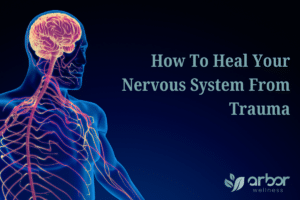Living with Complex PTSD often means navigating a landscape where reality can feel distant,...
Read MoreTable of Contents

Medically Reviewed by
Dr. Thompson
Last updated: August 2, 2025
Understanding Trauma and Its Effects
Trauma occurs when an individual experiences or witnesses events that are physically or emotionally harmful, life-threatening, or overwhelming.
These experiences can fundamentally alter how a person perceives themselves, others, and the world around them. Trauma doesn’t discriminate—it can affect anyone regardless of age, background, or previous life experiences.
The impact of trauma extends far beyond the initial event. Traumatic experiences can disrupt normal brain functioning, particularly in areas responsible for memory processing, emotional regulation, and threat detection.
This neurobiological impact explains why trauma survivors may experience intense reactions to reminders of their trauma, even when they’re objectively safe.
Understanding trauma requires recognizing that our responses to traumatic events are not signs of weakness or character flaws—they’re normal reactions to abnormal experiences. The human brain and nervous system are designed to protect us from danger, but sometimes these protective mechanisms can become overactive or misdirected following trauma.
Types of Trauma Disorders
Trauma disorders are mental health conditions that can manifest in several distinct disorders, each with unique characteristics and treatment approaches. Understanding these different conditions helps individuals and families recognize when professional help may be beneficial.
Post-Traumatic Stress Disorder is perhaps the most well-known trauma disorder. PTSD develops after exposure to actual or threatened death, serious injury, or sexual violence. The condition involves four main symptom clusters: re-experiencing the trauma through flashbacks or nightmares, avoidance of trauma-related stimuli, negative changes in thoughts and mood, and alterations in arousal and reactivity.
PTSD can develop following various traumatic events, including military combat, sexual assault, serious accidents, natural disasters, or witnessing violence. The disorder significantly impairs daily functioning and relationships, but responds well to specialized trauma-focused treatments.
Acute Stress Disorder
Acute Stress Disorder shares many similarities with PTSD but occurs immediately following a traumatic event and lasts between three days and one month. Symptoms include intrusive memories, negative mood, dissociative symptoms, avoidance behaviors, and arousal symptoms.
While Acute Stress Disorder is temporary by definition, it serves as an important predictor of who may develop PTSD. Early intervention during this acute phase can significantly improve long-term outcomes and potentially prevent the development of chronic PTSD.
Adjustment Disorder
Adjustment Disorder occurs when an individual has difficulty coping with a specific stressor or life change, resulting in emotional or behavioral symptoms that are disproportionate to the severity of the stressor.
Unlike PTSD, the triggering events in Adjustment Disorder don’t necessarily involve life-threatening situations—they might include divorce, job loss, moving, or other significant life changes.
This condition typically develops within three months of the stressor and involves symptoms such as depressed mood, anxiety, disturbance of conduct, or mixed emotional and behavioral symptoms. With appropriate support, most people with Adjustment Disorder recover completely.
Step Inside Arbor Wellness
At Arbor Wellness, healing begins the moment you arrive. Our peaceful, modern facility is designed to support your recovery in a safe, comfortable, and welcoming environment. From thoughtfully furnished rooms to tranquil common spaces, every detail is built with your well-being in mind. Explore the video and photos below to see where your next chapter could begin.
Signs and Symptoms of A Trauma Disorder
Trauma disorders manifest through a wide range of symptoms that can affect every aspect of a person’s life.
Recognizing these signs is crucial for getting appropriate help and beginning the healing process.
Re-experiencing Symptoms
- Intrusive memories or flashbacks of the traumatic event
- Distressing dreams or nightmares related to the trauma
- Severe emotional distress when exposed to trauma reminders
- Physical reactions such as rapid heartbeat or sweating when remembering the trauma
- Feeling as though the traumatic event is happening again
Avoidance Symptoms
- Avoiding thoughts, feelings, or conversations about the trauma
- Staying away from places, people, or activities that serve as reminders
- Inability to remember important aspects of the traumatic event
- Social withdrawal and isolation from friends and family
- Avoiding situations that might trigger trauma memories
Negative Alterations in Mood and Thinking
- Persistent negative beliefs about oneself or the world
- Distorted blame of self or others for the trauma or its consequences
- Persistent negative emotional state (fear, horror, anger, guilt, shame)
- Diminished interest in previously enjoyed activities
- Feelings of detachment from others
- Persistent inability to experience positive emotions
Alterations in Arousal and Reactivity
- Hypervigilance or constantly being “on guard”
- Exaggerated startle response
- Problems with concentration and attention
- Sleep disturbances or insomnia
- Irritability and outbursts of anger
- Reckless or self-destructive behavior
Physical Symptoms
- Chronic pain or headaches
- Gastrointestinal problems
- Cardiovascular issues
- Immune system dysfunction
- Fatigue and exhaustion
- Muscle tension and body aches
Learn More About Trauma DIsorders
Discover more about recognizing, understanding, and managing trauma disorders:
How To Heal Your Nervous System From Trauma
Trauma can leave lasting imprints on both our minds and bodies. When we experience...
Read MoreWhat is Religious Trauma?
Religious trauma is a complex psychological condition that develops when religious teachings, practices, or...
Read MoreStill have questions?
We’re here to help you find clarity and the right care.
Call us now or click below to verify your insurance and take the first step toward healing.
Trauma-Informed Treatment Approaches
Effective trauma treatment requires specialized approaches that address both the psychological and physiological impacts of traumatic experiences. At Arbor Wellness, our trauma-informed care recognizes the widespread impact of trauma and integrates this understanding into all aspects of treatment.
Evidence-Based Therapies
Biological factors include genetics, with family history being a significant risk factor, as well as brain chemistry imbalances and hormonal changes during puberty, pregnancy, or menopause.
Trauma-Focused Cognitive Behavioral Therapy (TF-CBT) helps individuals process traumatic memories while developing healthy coping strategies. This approach combines cognitive restructuring with exposure techniques to reduce trauma-related symptoms and improve functioning.
Cognitive Processing Therapy (CPT)
Cognitive Processing Therapy (CPT) focuses on helping individuals understand and modify unhelpful thoughts related to their trauma. This approach is particularly effective for addressing self-blame and negative beliefs that often accompany trauma.
Medication Options
Psychiatric medications can play an important role in trauma treatment, particularly when symptoms are severe or interfere with participation in therapy:
Selective Serotonin Reuptake Inhibitors (SSRIs)
Selective Serotonin Reuptake Inhibitors (SSRIs) are often the first-line medication treatment for trauma disorders. These medications can help reduce symptoms of depression, anxiety, and intrusive thoughts.
Prazosin
Antianxiety medications
Antianxiety medications might be used short-term to help manage severe anxiety symptoms, but they’re typically not recommended for long-term use in trauma treatment.
Prazosin may be prescribed specifically for trauma-related nightmares and sleep disturbances, as it can reduce the intensity and frequency of disturbing dreams.
Holistic Therapy Approaches
Trauma affects the whole person, not just the mind, which is why holistic approaches are essential components of comprehensive treatment:
Somatic therapies focus on the body’s role in trauma recovery, helping individuals reconnect with their physical selves and release trauma stored in the body.
Yoga and Mindfulness Practices
Yoga and mindfulness practices can help restore the connection between mind and body while teaching valuable self-regulation skills.
Art and Expressive Therapies
Art and expressive therapies provide alternative ways to process and express traumatic experiences when words feel inadequate.
Residential Treatment
For individuals with severe trauma disorders that significantly impair daily functioning, residential treatment provides intensive, round-the-clock support in a safe, structured environment. Our residential program offers:
- Intensive individual and group therapy sessions
- 24/7 psychiatric and medical support
- Specialized trauma treatment modalities
- Holistic and experiential therapies
- Family therapy and support services
- Comprehensive aftercare planning
Complex Trauma vs. Single-Incident Trauma
Understanding the difference between complex trauma and single-incident trauma is crucial for effective treatment planning and recovery expectations.
Single-Incident Trauma
Single-Incident Trauma results from a specific, time-limited traumatic event such as a car accident, natural disaster, or single assault. While these experiences can certainly cause significant distress and PTSD, they typically involve one clearly defined traumatic event with a clear before and after.
Complex Trauma
Complex Trauma (also known as Complex PTSD) results from repeated, prolonged exposure to traumatic events, often beginning in childhood. This might include ongoing abuse, neglect, domestic violence, or other chronic traumatic experiences. Complex trauma affects multiple areas of functioning and often involves:
- Difficulties with emotional regulation
- Problems with self-concept and identity
- Challenges in relationships and attachment
- Disrupted belief systems about safety and trust
- Physical health complications
- Difficulties with attention and consciousness
Complex trauma typically requires longer, more intensive treatment that addresses not only trauma symptoms but also the fundamental developmental impacts of chronic traumatic stress.
Recovery Process and Timeline
Trauma recovery is not a linear process, and there’s no standard timeline for healing. Recovery looks different for everyone and depends on various factors including the nature of the trauma, individual resilience factors, available support systems, and access to appropriate treatment.
Phase 1: Safety and Stabilization
The first phase focuses on establishing physical and emotional safety, developing coping skills, and stabilizing symptoms. This phase might last weeks to months and involves learning to manage triggers and developing a sense of control.
Phase 2: Processing and Integration
Once stabilization is achieved, the focus shifts to processing traumatic memories and experiences. This phase involves working through the trauma narrative and integrating these experiences into one’s life story in a healthy way.
Phase 3: Reconnection and Growth
The final phase involves rebuilding relationships, pursuing meaningful activities, and developing a sense of future possibilities. This phase represents not just recovery but potential post-traumatic growth.
It’s important to understand that recovery isn’t about returning to who you were before the trauma—it’s about integrating the experience and moving forward as a whole person who has survived and can thrive.
Take Our Free Trauma Quiz
Wondering if what you’re feeling could be trauma?
Our quick, confidential depression screening can help you understand your symptoms and decide on your next steps.
Your mental health matters. Take the first step toward feeling better today.
Building Resilience After Trauma
Resilience—the ability to adapt and thrive despite adversity—can be developed and strengthened throughout the recovery process.
Building resilience doesn’t mean forgetting the trauma or pretending it didn’t happen; rather, it involves developing skills and perspectives that support healing and growth.
Key Components of Resilience
Social Connection
Building and maintaining supportive relationships provides crucial emotional support and helps combat the isolation that often accompanies trauma.
Meaning-Making
Finding purpose and meaning in life, sometimes including the traumatic experience itself, can facilitate healing and growth.
Self-Efficacy
Developing confidence in your ability to cope with challenges and influence outcomes in your life.
Emotional Regulation
Learning to identify, understand, and manage emotions effectively.
Adaptive Coping
Developing healthy ways to manage stress and difficult emotions.
Physical Self-Care
Maintaining physical health through proper nutrition, exercise, and sleep.
Spiritual Connection
For many people, spiritual practices or beliefs provide comfort and meaning during recovery.
You Are Not Alone.
You Deserve To Get Help.
Arbor Wellness is an industry leader in mental health treatment. Our team of top medical experts specialize in dual diagnosis treatment and are committed to ensuring that each patient is treated as an individual.
Call us today, we’re available 24/7.
Insurance Can Help Cover the Cost of Treatment
We work with most major health insurance plans—including those with out-of-network benefits—to help make detox and recovery more affordable.
Click below to verify your coverage and explore your options today.





































